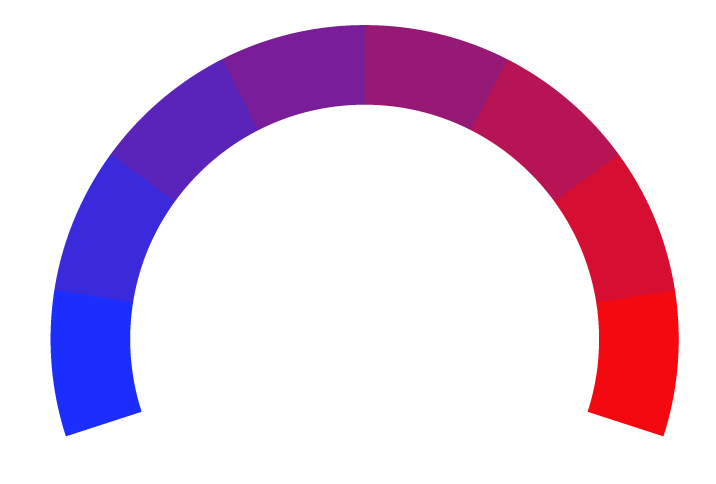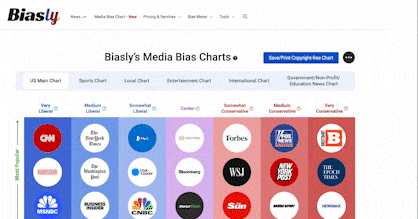Jerry Brown's stance on criminal justice policy has evolved significantly over his political career, moving from a more conservative approach in his earlier terms as governor to a more liberal, reform-oriented stance in his later years. Initially, Brown signed laws that led to mass incarceration, but later in his governorship, he championed measures to reduce prison populations, increase rehabilitation opportunities, and promote second chances for offenders. Brown's criminal justice legacy reflects a shift from a "tough on crime" mentality to a focus on redemption and data-driven reforms. Overall, his stance on this issue can be characterized as Somewhat Left.
Source: On Crime and Punishment, Gov. Jerry Brown Leaves behind Revised Rules and a New Focus on Redemption - Los Angeles Times, n.d. Based on the analysis of Jerry Brown's policies, he appears to have a balanced and pragmatic approach, leaning towards the center on economic issues. While he was fiscally conservative during his early terms as governor, cutting spending and building up budget surpluses, he also supported progressive environmental initiatives and social programs. In his later terms, he focused on restoring the state's fiscal health while also addressing climate change and other pressing challenges. Overall, Jerry Brown's economic policies can be characterized as Somewhat Right to Center on the conservative-liberal scale. [(Jerry Brown - Wikipedia, n.d.), (Jerry Brown - Wikipedia, n.d.), (Jerry Brown’s Legacy in California: Fiscal Battles, Environmental Fights, n.d.),
Source: Jerry Brown’s Legacy in California: Fiscal Battles, Environmental Fights, n.d. Based on the analysis of Jerry Brown's education policies, he appears to have a Somewhat Left leaning overall. Brown's most significant contribution was the passage of the Local Control Funding Formula, which introduced a more equitable and progressive school funding system that directed additional resources to high-need students. He also supported the implementation of the Common Core standards and new assessments, as well as efforts to curb suspensions for young students. However, some issues like the expansion of charter schools and lack of oversight on LCFF spending remained unaddressed. Brown's education reforms aimed to increase equity and community engagement, though challenges in fully realizing their promise remain.
Source: Landmark Reforms Championed by Gov. Brown Leave Deep Imprint on California Education | EdSource, n.d. Jerry Brown's policy stance on energy is decidedly liberal. He signed SB 100, which sets a goal of 100% clean electricity in California by 2045, going beyond the state's existing renewable energy targets. Additionally, Brown issued an executive order aiming for economy-wide carbon neutrality by 2045, making California's climate commitment one of the most ambitious in the world. These actions demonstrate Brown's strong support for transitioning to renewable energy and reducing greenhouse gas emissions, positioning him firmly on the liberal end of the policy spectrum on energy and climate issues.
Source: California Governor Signs 100% Renewables into Law as the State Aims for Carbon Neutrality – SDG Knowledge Hub, n.d. Jerry Brown's stance on government dependency appears to be Somewhat Left. While he has supported measures to reduce government spending and promote fiscal discipline, he has also advocated for expanding social programs and safety nets, such as increasing Medi-Cal eligibility under the Affordable Care Act. Brown has emphasized the need to provide opportunities and support for disadvantaged communities, stating that "a disproportionate number of black and brown people represented six, five times their population in state prisons." Overall, his approach seems to balance fiscal responsibility with a commitment to addressing social inequalities.
Source: Jerry Brown on the Issues , n.d. Based on the analysis of Jerry Brown's healthcare policies, he appears to have a liberal leaning stance. Brown strongly opposed the Republican efforts to repeal and replace the Affordable Care Act, warning that it would result in a $6 billion budget hole for California and threaten healthcare coverage for millions of Californians. He criticized the Republican plan as being written by people who "don't know what the hell they're talking about." Brown's defense of the Affordable Care Act and his concern for maintaining healthcare access for low-income residents suggests a Somewhat Left to Medium Left overall stance on healthcare policy.
Source: With His Governing Legacy on the Line, Gov. Jerry Brown Dives in to Washington’s Healthcare Debate - Los Angeles Times, n.d. Jerry Brown's stance on immigration policy leans towards the liberal side of the spectrum. He signed landmark legislation, SB 54, that limits local law enforcement's cooperation with federal immigration authorities, making California a "sanctuary state." Brown stated the bill would protect public safety while providing comfort to immigrant families living in fear. He also signed bills to protect immigrant workers and tenants from retaliation and intimidation. Overall, Brown's actions demonstrate a liberal approach to immigration policy, aiming to shield undocumented immigrants in California from federal deportation efforts.
Source: Gov. Jerry Brown Signs Two Immigrant Protection Bills – Western Center on Law & Poverty, n.d. Based on the information provided, Jerry Brown's stance on national security and homeland security issues appears to be Somewhat Left. While he supported measures to avoid defense budget cuts and maintain the state's military presence, he also criticized the glorification of military violence and the lack of public debate around large military budgets. Brown banned the use of drones for private property photography, indicating a more progressive stance on privacy and civil liberties. Overall, his positions suggest a moderate-to-liberal leaning on national security and homeland security issues.
Source: Jerry Brown on the Issues , n.d. Jerry Brown's approach to reducing California's budget deficit was a balanced one, combining spending cuts with tax increases. While he proposed significant cuts to welfare, Medi-Cal, and the UC system, he also successfully campaigned for Proposition 30, which raised sales taxes and closed business tax loopholes. This combination of spending reductions and revenue increases allowed Brown to turn a projected deficit into a surplus. Overall, his deficit reduction strategy can be characterized as Somewhat Left, as he was willing to raise taxes to address the state's fiscal challenges rather than relying solely on spending cuts.
Source: Jerry Brown Creates California Surplus Miracle, But Can It Last?, n.d. Based on the information from the Drug Policy Alliance, Jerry Brown's stance on the war on drugs appears to be Somewhat Left. He signed the California Fair Sentencing Act, which eliminated the disparity in sentencing between crack and powder cocaine offenses, a policy that disproportionately impacted communities of color. However, he also vetoed a bill that would have allowed people charged with simple drug possession to complete a treatment program before pleading guilty, which could have further reduced the harsh consequences for immigrants. Overall, Brown's policies suggest a moderate approach to drug reform, aiming to address racial disparities in the criminal justice system while still maintaining some restrictions.
Source: Governor Jerry Brown Signs California Fair Sentencing Act to Eliminate Disparities in Crack and Powder Cocaine Sentencing - Drug Policy Alliance, n.d.
| 






















